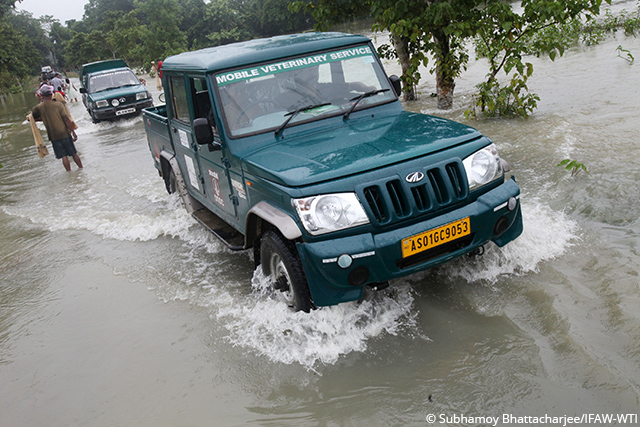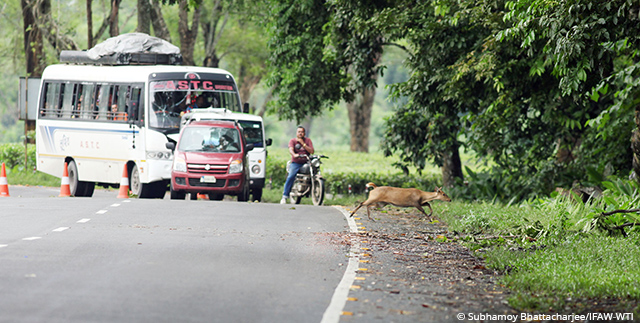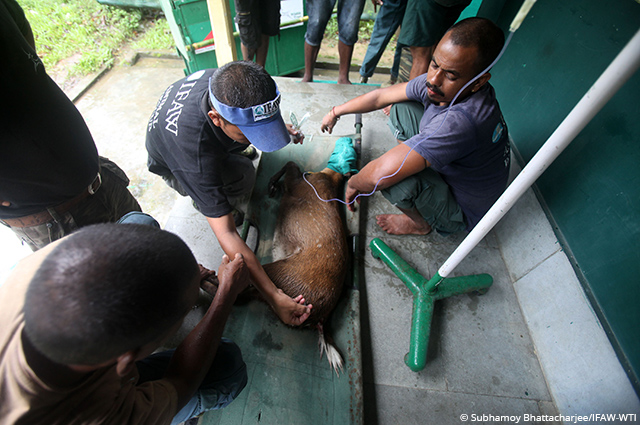CWRC Rescue Teams Swing into Action As Massive Floods Inundate Kaziranga
Kaziranga National Park, July 26, 2016: Kaziranga National Park, one of India’s UNESCO world heritage sites, has been inundated since Sunday night as water levels in the Brahmaputra River basin have continued to rise due to heavy monsoonal rains.
An estimated 107 forest camps in the park have been affected in this first wave of flooding, which has triggered an animal migration towards the Karbi Anglong Hills across National Highway 37. As the primary wildlife care facility in the area, the Centre for Wildlife Rehabilitation and Conservation (CWRC), run by IFAW-WTI with support from the Assam Forest Department, has swung into action, deploying its Mobile Veterinary Service units to aid affected wildlife.
Led by CWRC’s head veterinarian Dr Panjit Basumatary and MVS veterinarian Dr Samshul Ali, CWRC’s three MVS vehicles (a new vehicle has recently been donated by ONGC) are being used to run round-the-clock rescue and wildlife crisis mitigation operations in Kaziranga National Park. Another team with WTI-JTEF veterinarian Dr Daoharu Baro is attending to wildlife emergencies in the Western Range of Kaziranga.
The MVS teams have already attended several emergency wildlife rescue cases in the past 24 hours. “Most of these were hog deer injured while crossing the highway. Of 17 injured hog deer we have been able to save and release six animals. Three are currently under care at CWRC.”
An assessment of the flood situation by the Government of India’s Central Water Commission suggests that Kaziranga could face a major wildlife crisis over the next 72 hours.
An update shared this morning by WTI Deputy Director and CWRC’s centre-in-charge Dr Rathin Barman reveals that National Highway 37 is now flooded. An MVS team has also rescued a baby rhino this morning. More details to follow.
CWRC veterinarians treat an injured hog deer rescued from NH 37












